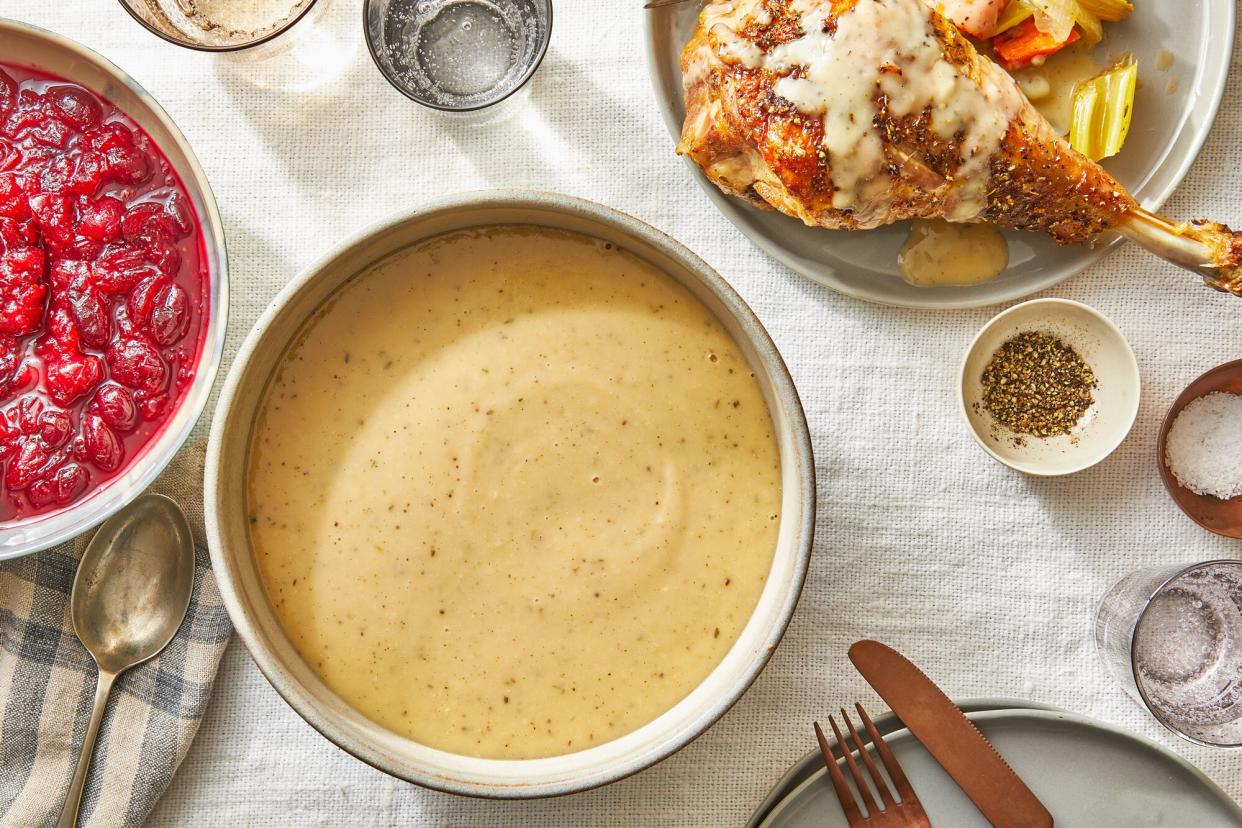How Long Does Leftover Gravy Last?

Caitlin Bensel; Food Styling: Torie Cox
Most every self-appointed Thanksgiving aficionado would agree that the outcome of the turkey will make or break any holiday feast. But what about the unsung hero of the day? Yes, we're talking about the gravy—and some would argue it's the single most important part of your meal.
Whether made from scratch from the bird's delicious drippings or poured straight from a jar into the saucepan, gravy is the proverbial glue that binds the entire meal together. Gravy knows no bounds, equally comfortable drizzled over the turkey, dressing, potatoes, and even the green bean casserole—it's akin to pouring a cozy hug right over all your favorite components of Thanksgiving dinner.
It's no wonder most hosts will go a bit overboard on the amount of gravy they prepare—you never know how many helpings your guests will want, and you'll of course want extras to accompany all the leftovers you'll be enjoying in the coming days.
If you're starting to wonder just how long leftover gravy lasts, the short answer is that you're likely to run out before it expires.
How Long Does Leftover Gravy Last?
No matter if your gravy has come from a jar or from your own secret recipe, the U.S. Department of Agriculture (USDA) advises that leftovers should be used or frozen within three to four days of making or opening it. Chances are, you'll sop up every last drop long before that timeframe comes to an end, as gravy is the real MVP of any post-Thanksgiving repeat meal or sandwich creation thanks to all the moisture and flavor it adds.
How To Store Leftover Gravy
Joshua Resnick, chef-instructor at the Institute of Culinary Education, suggests storing gravy in an air-tight container—like a glass jar with a tight-fitting lid or a deli container. This simple step will help preserve and protect gravy for several days.
Can You Freeze Leftover Gravy?
Yes, according to the USDA, you can freeze gravy for four to six months. It may be easier to store freezer-bound leftover gravy in a freezer bag (if you have a lot) or ice cube trays (to use in smaller portions at a later date).
"To best work with frozen gravy, either transfer it into the fridge the day before it's needed to defrost or run it under cold water in its container until it's completely defrosted before reheating," advises Resnick.
How To Reheat Leftover Gravy
To best reheat gravy, start by putting it in an appropriate-sized vessel. If the pot is too large, Resnick says you can burn the gravy before it all reheats; too small and it takes longer and may bubble over.
Next, add in a splash of water or stock before heating, which Resnick says will provide moisture to offset any evaporation—and, since the water will warm faster than the sauce, it can prevent burning. Heat the sauce until it boils and always recheck your seasoning before serving.
How To Tell if Leftover Gravy Has Gone Bad
When it comes to determining how long leftover gravy lasts, aside from the three- to four-day timeframe, it's always wise to double check with your nose and tastebuds.
"You can tell if gravy goes bad by both the smell and the taste," says Resnick. "Turned gravy would have a sour taste or an unpleasant aroma."
What It Means if Your Leftover Gravy Separates
If your gravy appears to have separated, know that that doesn't have anything to do with the freshness of it. It's still safe to eat—just add a little liquid, and give it an enthusiastic whisking.
To reduce your chances of finding separated gravy, it's a good practice to pop it in the blender right before packaging it up for the freezer.

